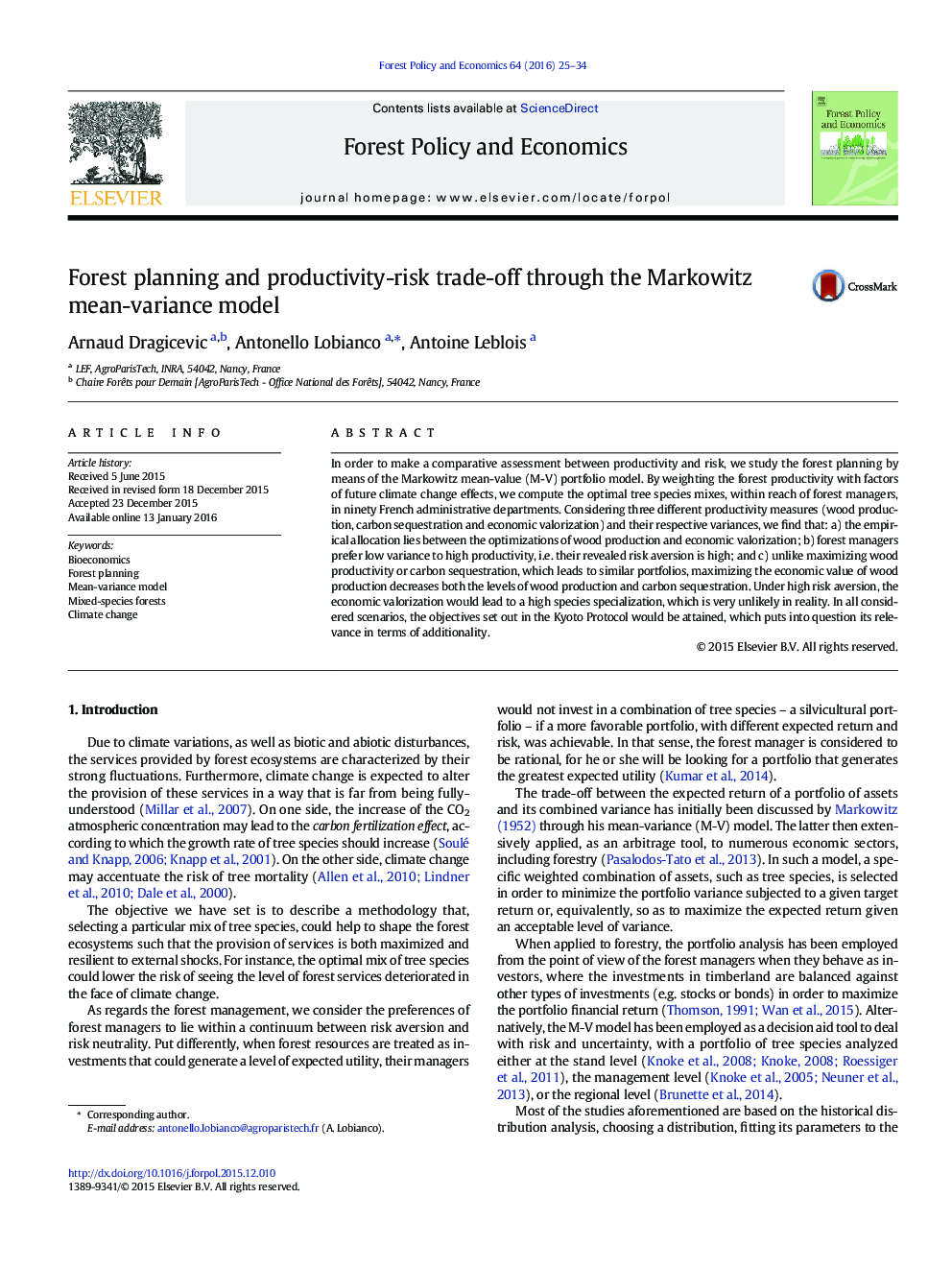| Article ID | Journal | Published Year | Pages | File Type |
|---|---|---|---|---|
| 91117 | Forest Policy and Economics | 2016 | 10 Pages |
•We study the arbitration between productivity and risk in forest planning using a portfolio model.•We compute the optimal tree species mix in 90 French Departments.•We consider wood production, carbon sequestration and economic valorisation.•Forest managers reveal a high risk aversion, that is they prefer low variance to productivity.•Policy instruments that lower risk have great potential in increasing carbon sequestration rate.
In order to make a comparative assessment between productivity and risk, we study the forest planning by means of the Markowitz mean-value (M-V) portfolio model. By weighting the forest productivity with factors of future climate change effects, we compute the optimal tree species mixes, within reach of forest managers, in ninety French administrative departments. Considering three different productivity measures (wood production, carbon sequestration and economic valorization) and their respective variances, we find that: a) the empirical allocation lies between the optimizations of wood production and economic valorization; b) forest managers prefer low variance to high productivity, i.e. their revealed risk aversion is high; and c) unlike maximizing wood productivity or carbon sequestration, which leads to similar portfolios, maximizing the economic value of wood production decreases both the levels of wood production and carbon sequestration. Under high risk aversion, the economic valorization would lead to a high species specialization, which is very unlikely in reality. In all considered scenarios, the objectives set out in the Kyoto Protocol would be attained, which puts into question its relevance in terms of additionality.
